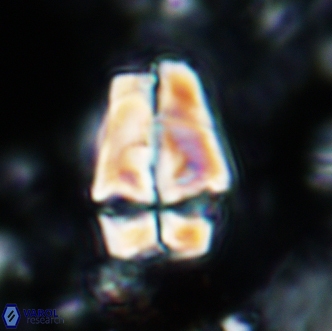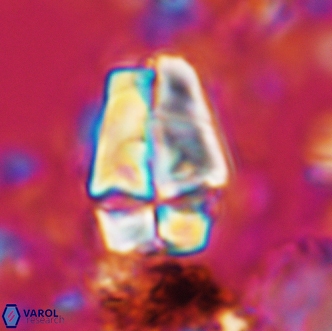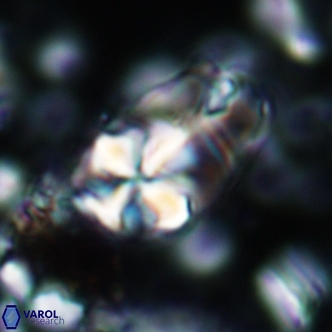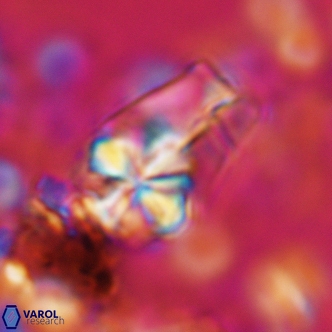Symmetrikiexafanisi magnifica
Symmetrikiexafanisi magnifica Varol, 2025
Large species of Symmetrikiexafanisi (greater than 9.0 μm) exhibit a moderately high proximal cycle, an extremely thin lateral cycle, and twin apical spines joined along their entire length. A distinct short supplementary segment between the apical spines is visible only when the specimen is oriented at 45° under cross-polarised light (XPL). The maximum width of the species is at the base of the apical spine.
From the Latin magnifica, magnificent – refers to its superb appearance.
Optical Properties: The apical spines and the proximal cycle exhibit symmetrical extinctions. The lateral cycle displays parallel extinction and length-fast (-) elongation. Under XPL, when the specimen is oriented at 45°, the lateral cycle, supplementary segment, and a segment of the proximal cycle (observed from its length) create a cross in well-preserved specimens.
Symmetrikiexafanisi magnifica differs from Symmetrikiexafanisi cubaensis in that it is larger and has a distinct supplementary segment. These unique features aid in the accurate identification and classification of Symmetrikiexafanisi magnifica.
Varol, O. 2025. A practical guide to optical studies of calcareous nannofossils. Grzybowski Foundation Special Publication, 29, 230 pp.




